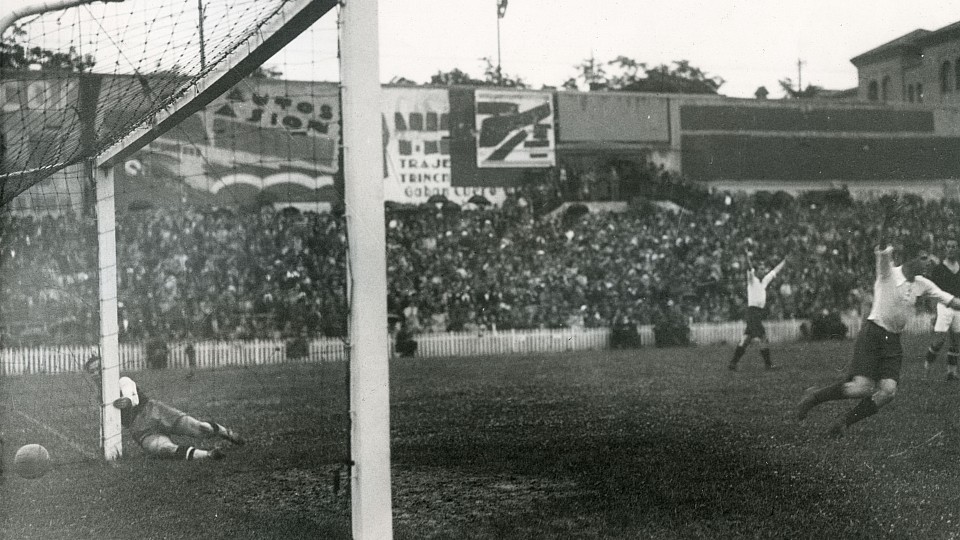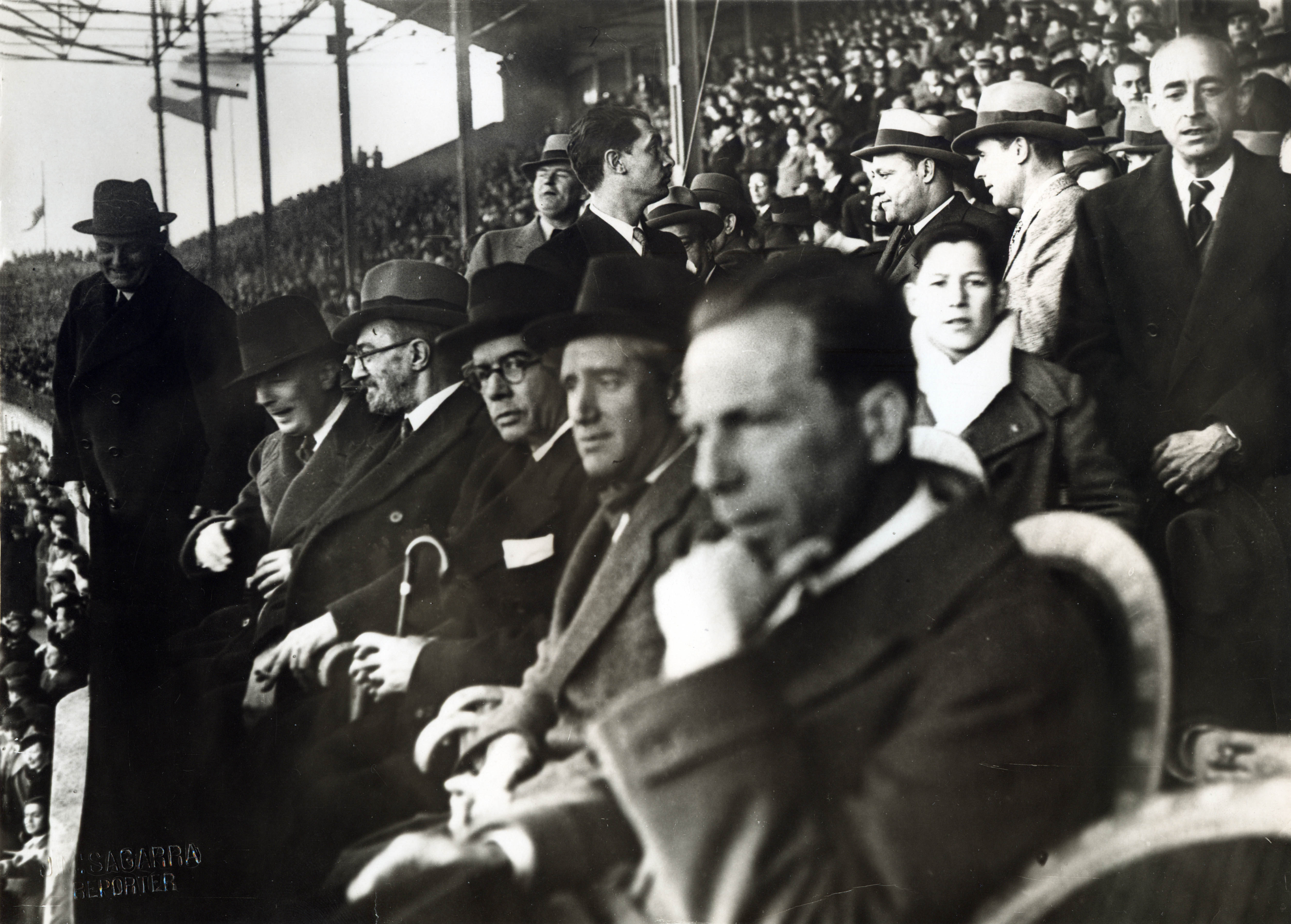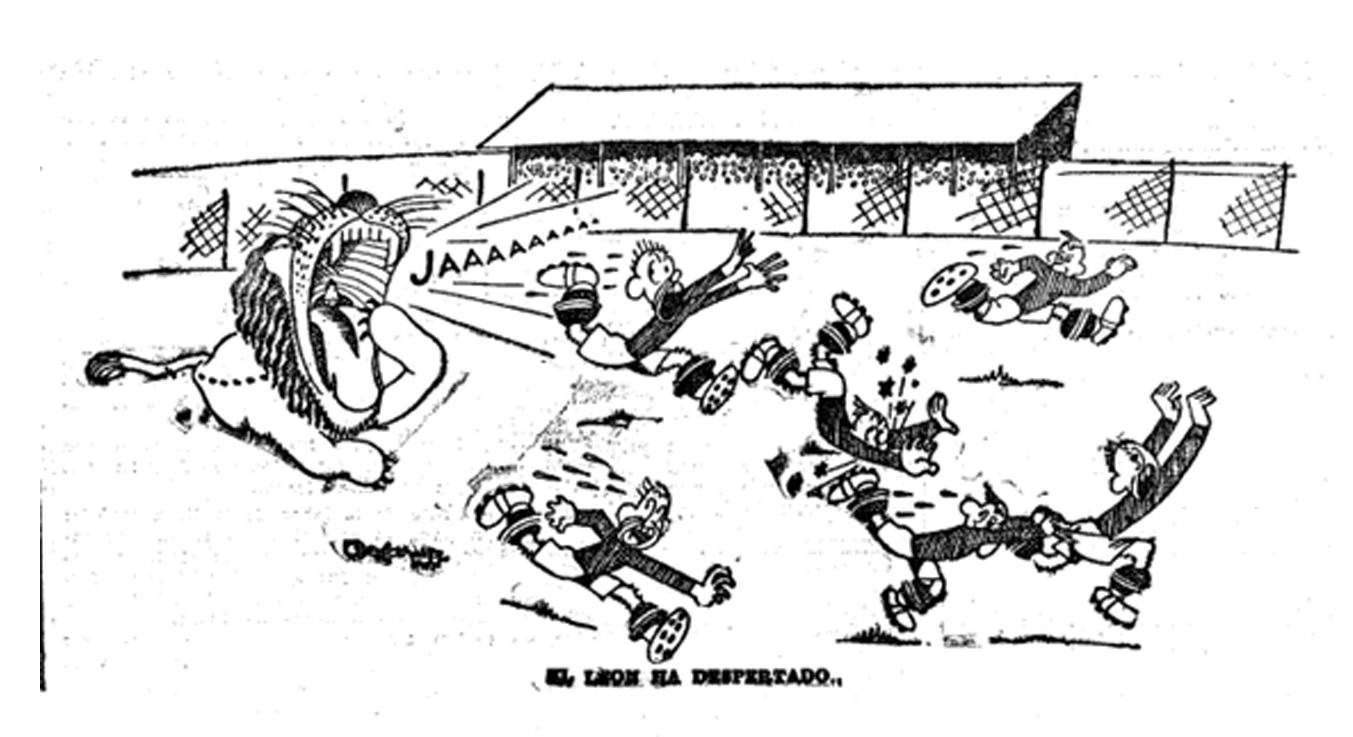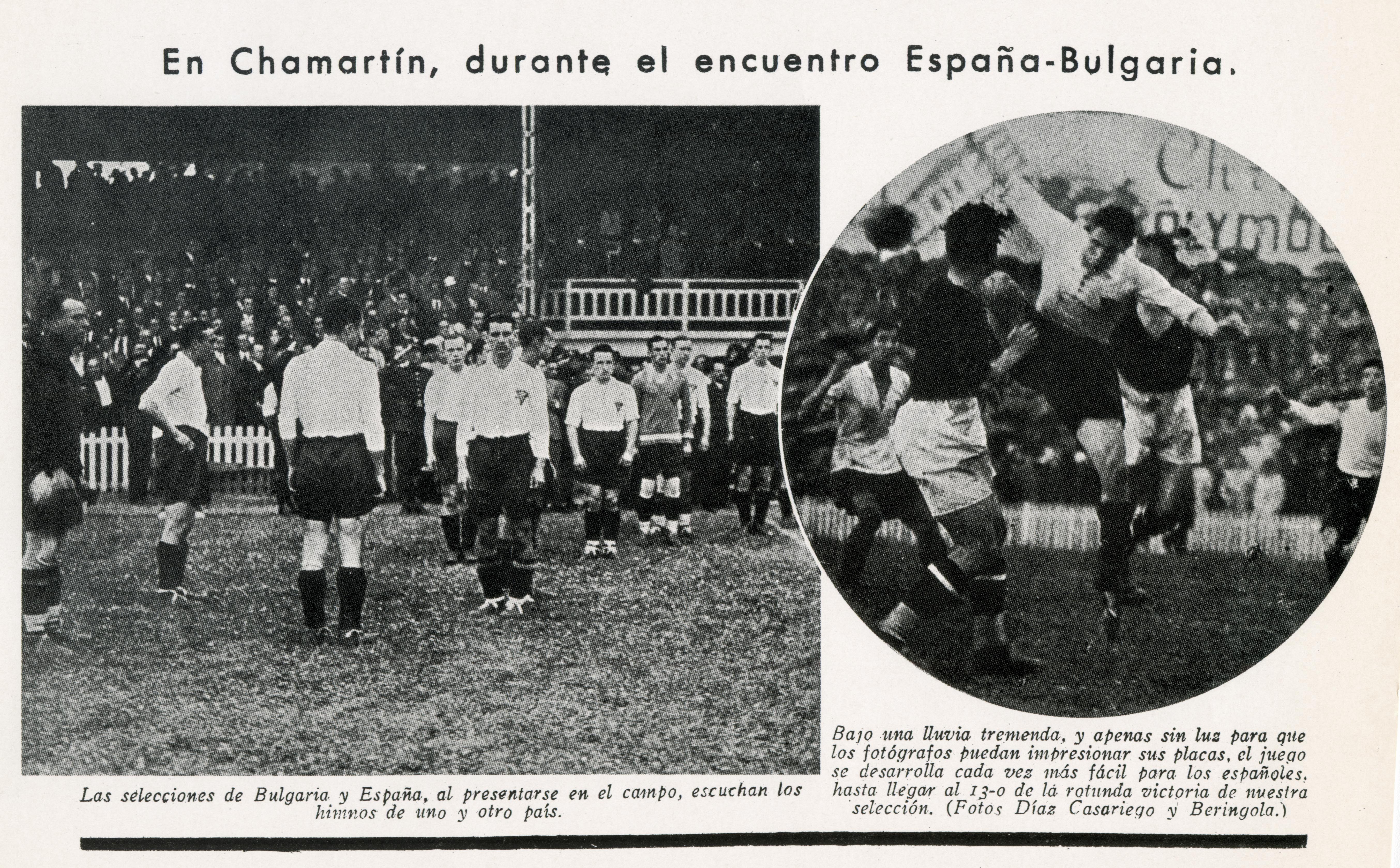History of the National Team (part 4): the 1930s

After 1928, the Spanish national football team underwent a major overhaul going into the coming decade of the 1930s that nobody imagined would be abruptly cut short by the Civil War and the subsequent Second World War. Before that dramatic gap, our national team had time to rise once again.
The era of José María Mateos (1929-1933)
After the disappointment of the 1928 Olympics, José María Mateos, who had already been in charge of the national team between 1925 and 1927 in several of the Technical Committees that were formed to take charge of the national team, took over as coach individually. Under Mateos, the team underwent a total renovation, with seven players making their debuts in the first match against the Portuguese, a game in which the Ibero-American Exhibition Stadium in Seville was inaugurated.
With Mateos at the helm, 1929 was an emblematic year for the national team and Spain strung together three great victories: 5-0 against Portugal in Seville, 8-1 against France in Zaragoza and the famous 4-3 win over England at the Metropolitano in Madrid.
After defeating the Portuguese, Spain went on to beat France 8-1 at the old El Torrero ground. Rubio was once again the star performer (4 goals) along with Bienzobas (2) and Goiburu (2). A month and a day later (15 May), the national team beat England 4-3. It was the first defeat for the English on the European mainland, previously they had only lost to Scotland.
Against England, the coach José María Mateos chose the same team as against Portugal, with just one change: he fielded Ricardo Zamora in goal; in defence, the Madrid player Félix Quesada and the experienced Jacinto Quincoces (still at Alavés); in midfield, the Español player Prats, was accompanied by Real Sociedad’s Marculeta and the also Madrid player José María Peña. Two Osasuna players played up front: Jaime Lazcano, recently signed by Real Madrid, and Severiano Goiburu, who was still in Pamplona. In the centre of the attack was the goal scorer Gaspar Rubio and on the left wing, the Canary Islander from Español Padrón (the only change with respect to the match against France) and the Real Sociedad player Yurrita. The match was watched by members of the royal family, specifically the princes Don Juan, Don Gonzalo and Don Jaime de Borbón.
That historic match against the “pros” was made famous by one name who stole the show with a standout performance. England led 0-2 before half an hour had been played, both goals coming from Carter. The comeback and the star of the show was thanks to the goals of Gaspar Rubio, scorer of two goals and creator of one more with the assist for the final goal in what was a glorious 4-3 win for the Spanish. He would recall some details of that afternoon 20 years later:
"The goal that pleased me most was the one that drew us level 3-3 with England. I scored two that afternoon, both with headers. But that one, I tell you, was exciting. The crowd even invaded the pitch to embrace me, it was an unforgettable goal!
The supporters ended up carrying the players off on their shoulders, something that hadn't happened since the win against Belgium in 1921.
In the 1930s, as had not been the case in the previous decade, this was a team built on stronger foundations, with players who enjoyed greater continuity in their positions in the squad. Thus, Ricardo Zamora, as had been the case since 1920, remained undisputed as the first-choice goalkeeper, at least until 1935-36 when his career was nearing its end. In defence, the Ciriaco-Quincoces pairing, who along with "El Divino", played for Real Madrid, formed a solid unit. In midfield there were more variations, but from 1932 the trio of Cilaurren (Athletic), Gamborena (Real Unión) and Marculeta (Real Sociedad) established themselves.
Luis Regueiro (Madrid FC) and Isidro Lángara (Oviedo) became two of the pillars of the team up front and a reliable source of goals for the Spanish national team in the 1930s.
In the years leading up to the World Cup in 1934, many of the matches played by the national team ended in victories, except for the defeat in Prague against Czechoslovakia in 1930 (2-0), the crushing 7-1 drubbing by England in 1931 and the narrow 1-0 loss to France in Paris in 1933. Spain, by contrast, fared better on numerous other occasions, beating Italy 2-3 in Bologna in 1931, winning 2-1 in Oviedo against Yugoslavia and 13-0 against Bulgaria in 1933. However, these victories did not seem to make up for the bad taste left in the mouth having lost to the English and the French: as the 1934 World Cup challenge approached, there were more doubters than people feeling confident among the Spanish public.
In June 1931, Spain won 2-3 in Bologna against Italy, with two goals from Luis Regueiro, who had not scored since the 1928 Olympic Games, and one from Ventolrá. It was the first time Spain had beaten Italy away in what seemed to be a further demonstration that, after the failures of 1924 and 1928, the Spanish national team had turned a corner and was now reborn.
It was a victory that undoubtedly restored national pride, as reflected in this Mundo Deportivo cartoon entitled: "The lion has woken up".
The arrival of the Republic and a new cycle
In 1931 many things changed in Spain, with the Second Republic being proclaimed. As for the Spanish national team, they suffered a series of bad results, among which were some truly catastrophic ones. These diluted, at least in part, the euphoria stemming from the victory against England and the win in Bologna against the Italians in 1930.
Although on 19 April the national team had already drawn 0-0 at San Mamés against Italy, with the Republic already announced, the match on the 26th of that month was the one that was played with a special atmosphere in the air. It was a day of great significance: the Spanish national team played a friendly match, marked by the complex political context the country was going through against Ireland shortly after the proclamation of the Second Republic.
The euphoria of the change of regime coexisted with moments of tension, especially in Catalonia, where Francesc Maciá had proclaimed the Estat Català (Catalan State) "will try to integrate into the Federation of Iberian Republics with all cordiality". It was in this context that the match between Spain and Ireland was played in the then Montjuic Stadium in Barcelona. It was a match in which Niceto Alcalá-Zamora, provisional president of the Second Republic, and the president of the Generalitat (Catalan Authorities), Francesc Maciá, appeared together in what seemed to be on good terms. As newspapers ABC and La Rambla reported, they were "acclaimed by the crowd" who came to watch the match, which ended in a 1-1 draw. Then, at the end of the match, Don Niceto and Don Francesc went down to greet the players.
That image of the two leaders together came to show publicly that the link between the two institutions that both politicians embodied had not been broken: the national team had come to serve as a nexus of union.
The national team started 1931 off with two draws, against Italy and Ireland at San Mamés and Montjuich respectively, once again raising doubts about the team's ability. But the worst was yet to come when those bad omens were confirmed during the "Highbury disaster", when Spain were beaten 7-1 by England.
Four days later, the team turned that defeat around with a 5-0 win over Ireland in a match in which captain Samitier, playing as centre-forward, led the team, with Gamborena part of a marvellous midfield dynamo. Up front, Regueiro and Arocha, both of whom scored twice, were the team's clinical finishers, while Ventolrá (scorer of 1 goal) and Gorostiza provided the pace in the side. Zamora did not play due to injury. His place was taken by Athletic's goalkeeper, Gregorio Blasco, who also had a great game.
Debuts that made history
1932 saw the debut of one of the most important players in the team's history, Isidro Lángara. The old Buenavista pitch in Oviedo, on 24 April 1932, witnessed the start of the Basque centre-forward's career. He began his life in the Spanish red by scoring against Yugoslavia in a 2-1 win, with goals from Lángara and Regueiro. Furthermore, his first game was in the stadium in the Asturian capital where he played. Lángara played for Oviedo FC, who then got promoted to the First Division in the 1932-33 season.
If Lángara was the first Second Division player to play for the national team, the second was Elícegui of Real Unión, who scored five goals in the four matches following his first cap.
After a year without football for the national team, they returned to the pitch in a friendly match against Portugal in Vigo (Balaídos) in April 1933. In the presence of the Secretary of the Presidency of the Republic, Rafael Sánchez-Guerra, the national team comfortably beat the Portuguese team 3-0 in a match in which another second division player, José Antonio Elícegui, made his debut and scored two goals. However, it was Cilaurren who impressed with his work in midfield.
The historic 13-0 win over Bulgaria and the "bonuses".
In the 1930s, before going to the World Cup, the biggest thrashing in the history of the national team took place in a friendly on 21 May 1933: Spain won 13-0 against a very poor Bulgaria side. Before that, they had lost 1-0 in Paris, putting in a poor performance, and drew 1-1 in Yugoslavia, a match in which Quincoces shone, and the press of the time noted that "he had not put a foot wrong all match".
In that match against the Bulgarians, Deportivo La Coruña's Chacho became the Spanish player to score the most goals in an international match: he scored six of the national team's goals, something still to be surpassed. Elícegui, the centre-forward in that match, scored three, Luis Regueiro two, Spain's Crisanto Bosch scored one and was the creator of six assists. The other goal came from Bulgaria's Mitchalov, who put it into his own net after a deflected shot from Chacho.
The story goes that at half-time the federation officials complained that so many goals were being scored because in those days they paid two hundred and fifty pesetas for winning and fifty for each goal scored:
"Either you stop scoring goals or we go bankrupt", they were told.
The boys continued to score but Elícegui, who missed a tap in, was told off by Quincoces:
"I'm warning you, Antonio, if you miss another one like that, we'll dock your wages!
The match against Bulgaria was José María Mateos' last as coach. On 22 July he was replaced by Amadeo García Salazar, the "handyman" from Alavés as well as the manager who unearthed Ciriaco and Quincoces. He was in charge of the preparations for the two qualifying matches (or potentially three if each team won one match each) for the 1934 World Cup.


